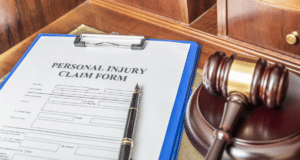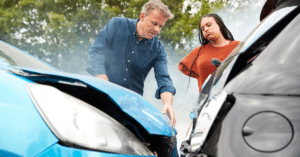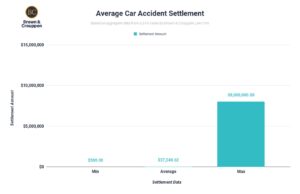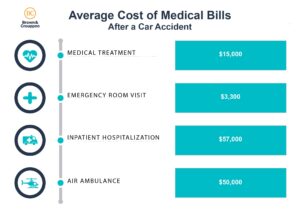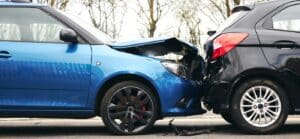How is Fault Determined in a Rear-End Accident?
Rear-ending someone who stops suddenly – If you suddenly stop and the vehicle behind rear ends your vehicle, the law presumes that the one who rear-ended you is at fault. This is because when driving behind another vehicle, there is a legal duty to maintain a safe following distance. The safe distance enables them to stop safely in the case of braking or slowing down. . However, the driver of the front vehicle may be liable in some situations if they were driving recklessly, were under the influence of alcohol or drugs, or if they suddenly stopped or braked without warning.
Rear-end accident caused by following too closely – Generally, if the rear driver is following too closely and hits your vehicle, then the rear driver is at fault. This is because the traffic rules require that there be a certain amount of distance between vehicles. Even if you suddenly hit your brakes, the other driver was likely following too closely if he or she hit your vehicle.
Rear-end accidents due to hazardous or poor conditions – There are many possible unexpected road hazards that can arise such as debris, an animal on the road, construction, or poor weather conditions. If the collision resulted from an unexpected hazard in the road that caused a sudden stop, either or both drivers may be able to sue the party that was responsible for the hazard. Overall, it is important to maintain a safe distance between your vehicle and the vehicle in front of you to avoid any potential liability.
Rear-end collision that may not be at-fault – There are several scenarios where the driver of the rear vehicle may not be at fault including:
- If the front driver stopped or braked suddenly without signaling or without giving the rear driver sufficient warning to react.
- If the front driver was driving in a reckless or dangerous manner and this contributed to the accident.
- If the dangerous road conditions, such as poor visibility, wet or slippery roads, or debris in the road, made it difficult for the rear driver to stop in time.
- If the rear driver had mechanical issues, such as faulty brakes, which made them unable to stop their vehicle.
If you or a loved one has been injured in an accident, get help from our legal team to understand what to do after a rear-end collision, understand your legal options, and get help with your claim if you’re eligible to recover compensation.
How Do Insurance Companies Handle Rear-End Auto Accident Claims?
Typically, when you file a rear-end accident claim, an insurance adjuster is assigned to gather details about the accident. Based on their review, the adjuster works with the insurer to determine who is at fault for the accident. When filing a claim, you should provide as much evidence as possible from the accident, including pictures of all the vehicles, injuries, traffic signals, skid marks, the layout of the roadway, etc.
After filing a claim, the insurance company will either approve or deny your accident claim based on who was at fault. The insurance company will review site-specific details including statements of involved individuals and the witnesses, police reports, photos, videos, and other physical evidence of damage. If your claim is approved, a settlement offer will likely be included.
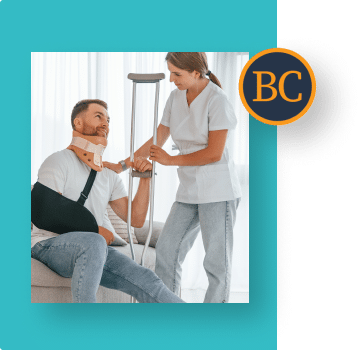
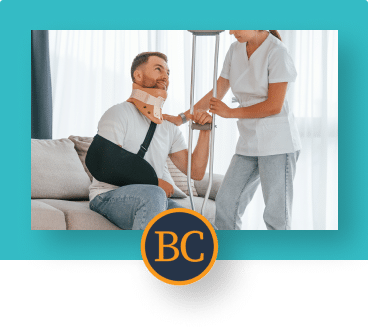
Were you injured in an accident due to someone else’s negligence? Get legal help from the most effective injury law firm in the Midwest.
Examples of How Missouri's Rear-end Doctrine Applies to Accidents
The rear-end collision doctrine is not absolute. Rather, it is a rebuttable presumption that can be contested with other evidence. Here are some examples:
- Multi-vehicle accident. If the only reason you hit the car in front of you was that you were just rear-ended yourself, you might be cleared of some or all of the blame.
- Malfunctioning brake lights/tail lights. Brake lights and taillights are not just for show. They are safety features specifically designed to alert other drivers that a vehicle is slowing down or stopping. Taillights are especially important at night to alert others of the presence of another vehicle.
- Improper lane change or usage. A rear-end crash can happen when one driver cuts off another in traffic or pulls out from a side street and hits the brakes.
- Backing up. Sometimes drivers will put their vehicle into reverse without checking for the presence of another vehicle.
In most cases, however, the driver who rear-ends another is at fault. Common causes of rear-end collisions include:
- Following too closely/tailgating. Frustrating as it is to get stuck behind a slow driver, expressing that frustration by tailgating is extremely dangerous.
- Distracted driving. Whether it’s a phone, other passengers, or anything else, driving while distracted is a leading cause of auto accidents.
- Speeding. The faster a vehicle is moving, the longer it takes to come to a complete stop.
- Hazardous conditions. The dangers of driving on ice, snow, and water are well known, and all drivers must maintain a safe driving speed and distance, regardless of the weather. The weather will not be held at fault if you slide, skid, or hydroplane into another car. You will.
Finally, remember that causing a rear-end collision can get very expensive, very quickly.
- If your car is damaged and you carry full coverage, you’ll still have to pay a deductible to get the car fixed or totaled out. However, if you carry liability-only coverage or are uninsured, the cost of repairs will come entirely out of your pocket.
- You may have to pay medical bills for any injuries you, your passengers, and the occupants of the vehicle you hit may sustain.
- If you get ticketed, you face possible fines, court costs, and legal fees.
- Your insurance premiums will almost certainly rise.
- Your auto policy may be canceled.
Put your phone away, slow down, and keep your eyes on the road. The best accident is the one that never happens at all.
If you have been involved in a rear-end collision that was not your fault, the car accident attorneys at Brown & Crouppen Law Firm may be able to help. Get started with you case by requesting a free case evaluation online.
Frequently Asked Questions
What if someone slams on their brakes and you hit them?
You will likely be at-fault for the rear-end collision. If you rear-end someone, you were likely following too closely. You have a duty as a driver to leave a prudent distance between your vehicle and the vehicle in front of you in order to allow adequate time to stop without hitting the vehicle in front of you.
What if you rear-ended someone who stopped suddenly?
The driver who suddenly stopped without any warning may be at fault for the accident if they fail to use the proper turn signal. However, it is important to keep in mind that following too closely, speeding, or otherwise driving negligently may result in you being found at fault for the accident.
If someone cuts me off and I hit them, who is at fault?
If you were not driving carefully or cautiously, you may be liable for the accident if a car pulls out in front of you, causing you to crash. On the other hand, if the car who cut you off drove into moving traffic across multiple lanes and did not signal that they were switching lanes, they could be held responsible for the rear-end collision.
If I rear-end someone, will I have to pay legal fees?
If you get ticketed, you face possible fines, court costs, and legal fees. Additionally, you may have to pay medical bills for any injuries that you, your passengers, and the occupants of the vehicle you hit sustained.
Will my insurance costs rise after a rear-end accident?
Insurance premiums are likely to rise for the at-fault driver. Those who have multiple accidents on file in short periods of time may have their insurance policy terminated by the insurance provider.

